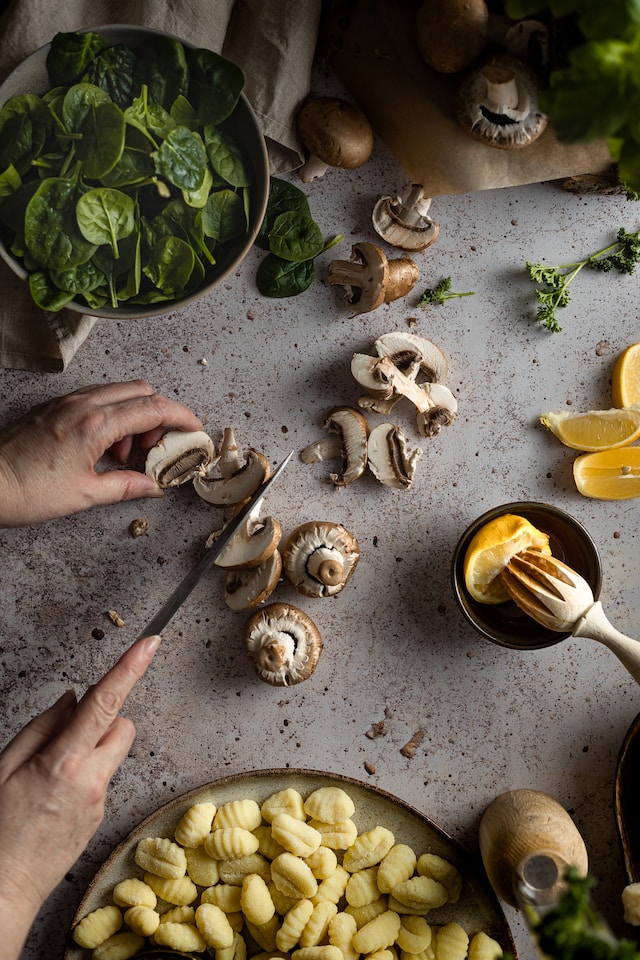
As a lover of good food, I have always been fascinated by the art of flavor palettes. The blend of different ingredients, spices, and herbs can completely transform a dish, making it memorable and delicious.
At its core, creating a flavor palette is all about balancing different tastes in a way that complements and enhances each other. It is a delicate dance between sweet, sour, salty, bitter, and umami flavors, all working together in perfect harmony. Whether you are creating a simple salad or a complex multi-course meal, mastering the art of flavor palettes is a key aspect of becoming an outstanding chef.
One of the most important elements of creating a successful flavor palette is understanding the different qualities of each ingredient. For example, sweet ingredients like honey or fruits can help balance out the sourness of vinegar or lime, while salty ingredients like soy sauce or cheese can bring out the umami flavors in meat or mushrooms.
Creating Flavor Palettes
To create a perfect flavor palette, it is crucial to understand the basics of taste and flavor. The human tongue has five different types of taste receptors – sweet, sour, salty, bitter, and umami. Each of these tastes has a unique flavor profile that can be combined in different ways to create a harmonious flavor palette.
Another key tip is to experiment with different combinations to find the perfect balance. Don’t be afraid to mix and match different flavors until you find the perfect combination that makes your taste buds dance. Some of my favorite flavor combinations include spicy chili peppers and tangy lime juice, or rich dark chocolate and creamy peanut butter.
Exploring different flavor profiles
The five basic tastes can be used to create different flavor profiles. Sweet flavors are usually associated with desserts and can be balanced out with salty or sour flavors. Salty flavors can be used to enhance the umami flavors in meat or seafood. Sour flavors, like vinegar or citrus, can be used to cut through the richness in fatty foods.

Bitter flavors, like coffee or dark chocolate, can be balanced by adding sweetness. Umami flavors are found in foods like mushrooms, soy sauce, and meat, and can be used to bring depth and richness to any dish.
Combining flavors to create harmonious palettes
When combining flavors, it is important to keep a balance between sweet, sour, salty, bitter, and umami tastes. Combining too much of one taste can overpower the others and leave your dish unpalatable. Start by using small amounts of each flavor, and gradually adjust the ratios until you find the perfect balance.
Enhancing flavors with herbs, spices, and seasonings
Herbs, spices, and seasonings play an important role in creating flavor palettes. Adding a pinch of cumin or coriander can add depth and warmth to a dish, while fresh herbs like basil or rosemary can add brightness and freshness. Experimenting with different herbs, spices, and seasonings can help to enhance the natural flavors of your ingredients and create unique and memorable flavor palettes.
Exploring Different Flavor Families
Creating a perfect flavor palette is not only about understanding the basics of taste and flavor, but also exploring different flavor families. Each flavor family has its own unique properties and can be used to create exciting and diverse dishes. In this section, we will explore the sweet flavor family.Write about
Sweet flavor family – The sweet flavor family is one of the most beloved flavor families, and it includes a wide range of flavors. Some common sweet flavors include honey, sugar, maple syrup, and agave nectar. These sweet flavors can be used in desserts, beverages, and even savory dishes to balance out the richness of other flavors.
Spicy flavor family – The spicy flavor family is all about adding heat to a dish. Some common spicy flavors include chili peppers, jalapeños, and cayenne pepper. Spicy flavors can add depth and complexity to a dish, and they can be used in everything from soups and stews to marinades and sauces.
Tangy flavor family – The tangy flavor family includes acidic flavors that can brighten up a dish. Some common tangy flavors include vinegar, lemon juice, and lime juice. These flavors can be used in dressings, marinades, and sauces to add a zesty kick to any dish.
Earthy flavor family – The earthy flavor family includes flavors that come from the earth, like mushrooms, truffles, and beets. These flavors can add a rich depth of flavor to soups, stews, and sauces, and they pair particularly well with meat and poultry dishes.
Herbaceous flavor family – The herbaceous flavor family includes fresh and dried herbs like basil, thyme, and parsley. These flavors can add freshness and brightness to any dish, and they are particularly popular in Italian and Mediterranean cuisine.

Savory flavor family – The savory flavor family is all about umami flavors, which add richness and depth to a dish. Some common savory flavors include soy sauce, miso paste, and Worcestershire sauce. These flavors can be used to enhance the natural flavors in meat, poultry, and seafood dishes.
Pairing Flavor Palettes with Dishes
Once you have created a killer flavor palette, it is important to know how to pair it with different dishes. Certain flavors are naturally suited to specific types of dishes, and understanding these pairings can take your culinary skills to the next level.
For example, tangy flavors like vinegar and citrus are perfect for salads and seafood dishes, while savory flavors like soy sauce and Worcestershire sauce are ideal for meat and poultry dishes. Sweet flavors, on the other hand, are perfect for desserts and can be used to balance out the saltiness in savory dishes.
Here are some specific pairing ideas to get you started:
- Spicy chili peppers and lime juice pair well with Mexican dishes like tacos and enchiladas.
- Tangy vinegar and Dijon mustard go well with salads, particularly those that feature bitter greens like arugula and endive.
- Earthy flavors like mushrooms and truffles are perfect for risottos and pasta dishes, particularly those made with creamy sauces.
- Herbaceous flavors like basil and parsley are great for Italian dishes like pasta sauces and pizzas, as well as Mediterranean dishes like falafel and hummus.
- Savory flavors like soy sauce and miso paste are ideal for Asian dishes like stir-fries and sushi.
Ultimately, creating a killer flavor palette is all about letting your creativity and taste buds run wild. With a little bit of practice and experimentation, you can transform any dish into an unforgettable culinary experience. So go ahead, get in the kitchen and start mixing up some delicious flavors. Your taste buds will thank you for it!
